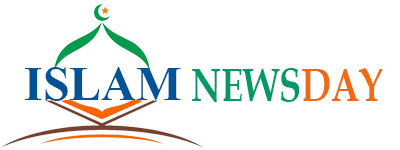Iran will celebrate the 45th anniversary of the 1979 Islamic Revolution on February 11, 2024.
The revolution overthrew the 2,500 years of monarchies and Pahlavi regime in Iran and established the first Islamic Republic under the leadership of an Islamic jurisprudence, a unique event in the history of the global world.
The impact of the revolution and the Islamic Republic has not been limited to Iran. Iextends to the entire Islamic world and to all of contemporary global affairs, including in the fields of science and technology.
The fields are the most important factors for the progress of a country. After the victory of the revolution, Iran made strenuous efforts to compensate the backwardness of the regime of Shah and set the ground for scientific progress. Today, her achievements in science and technology are noteworthy. Iran is one of the top global leaders science and technology.
Although unilateral coercive measures, illegitimate unlawful sanctions and an eight-year war imposed by then Iraq President Saddam Hussein with the support of the US and western superpowers slowed down the speed of scientific and technological progress in Iran, the war itself was a bounty as Imam Khomeini called it. It forced Iranian youths to rely on the indigenous capacities and capabilities to make the country independent, hence, numerous scientific and technological breakthroughs were put on display one after the other.
Scientific and technological progress is not possible without specialised and able forces, thus, the Islamic Republic has embarked on expansion and deepening of education in every level since its establishment. The first step was taken by Imam Khomeini when he ordered the formation of “Literacy Movement” in the first year of founding the Islamic Republic. As a result, the literacy rate increased from 47 to more than 90 per cent.
Iran’s successes in the field of education have made the Unesco to praise its efforts. Meanwhile, progress in higher education has been more spectacular as the number of universities have increased more than 11 times compared with the Pahlavi regime.
Currently, there are more than 2,570 universities in Iran, with three million and 800,000 students studying in those institutions, while before the Islamic Revolution, there were just 170,000 students in the universities. The eye-catching increase of Iranians with higher education has enabled the country to enjoy ample specialised and skilled workforce to accelerate development in various fields.
Scientific growth in Iran has been so high that the country is ranked 15th in the world. The speed of scientific growth has been 11 times more than the average global rate. The Islamic Educational, Scientific and Cultural Organization, affiliated to the Organization of Islamic Cooperation, announced that the Islamic Republic ranks first in the terms of sciences, research and inventions among Islamic nations.
One of the criteria for assessment of a country’s scientific level is the articles that are published by valid scientific centres. According to the ISI report, the number of scientific articles after the revolution had increased more than 69 times in 2016. Another outcome of giving priority to science and research is the successes of Iranian teenagers in various scientific Olympiads.
Iranian students have participated in different fields such as mathematics, physics, chemistry, computer, biology, astronomy and so on. Since 1987 when the Islamic Republic attended scientific Olympiads, the representatives of Iran have garnered nearly 700 medals and have been among 10 top nations in difficult scientific exams.
Today, Iran enjoys a prominent scientific position in the region and the world and, in some of the sophisticated technologies which are in the monopoly of the western governments; Iran is a pioneer.
The importance of presence in the space is felt so much so that the nations without space technology and satellites are called blind. Satellites are very effective in the fields like telecommunications, research, studying underground resources, meteorology and mapping, and some countries even use them for spying and military purposes.
Iran, understanding the importance of satellites, has attained colossal breakthroughs in this domain despite many sanctions, pressures and obstacles which have been illegally put on the way of Iran’s progress. The Islamic Republic is the 11th country that has achieved the technology of launching satellite and eighth that has launched a satellite to the earth’s orbit. It is also the only country in West Asia which has the capability of manufacturing satellites.
The first Iranian satellite was named Omid (hope), which was launched in 2009 with the help of satellite-carrier Safir (emissary).
Thus, Iran officially joined the club of nations possessing the technology of making and launching satellite.
Two years later, the satellite named Rasad (monitor) was put in the orbit with more facilities for imaging and, in 2012, Navid (promise) was launched. The last Iranian satellite, the sub-orbital launch of the Qaem 100 satellite carrier, was successfully conducted in October 2022.
This successful orbital launch marks a significant step forward in Iran’s space programme and further strengthens its position as a regional space power.
The Islamic Republic has made great progress in the field of peaceful uses of nuclear energy. The western powers, especially the US, have made many efforts to demonise Iran’s totally peaceful nuclear achievements in a bid to prevent her path of progress. This comes while country has done all its activities under the full supervision and verification regime of the International Atomic Energy Agency and in full compliance with the rights and obligations under the Nuclear Threat Initiative.
Forty-five years later, having thwarted all ruthless efforts expended by its enemies and co-conspirators to overthrow the government and replace it, the Islamic Republic still exists as a proud, sovereign nation that continues to shine in the global front.
The writer is a commentator

